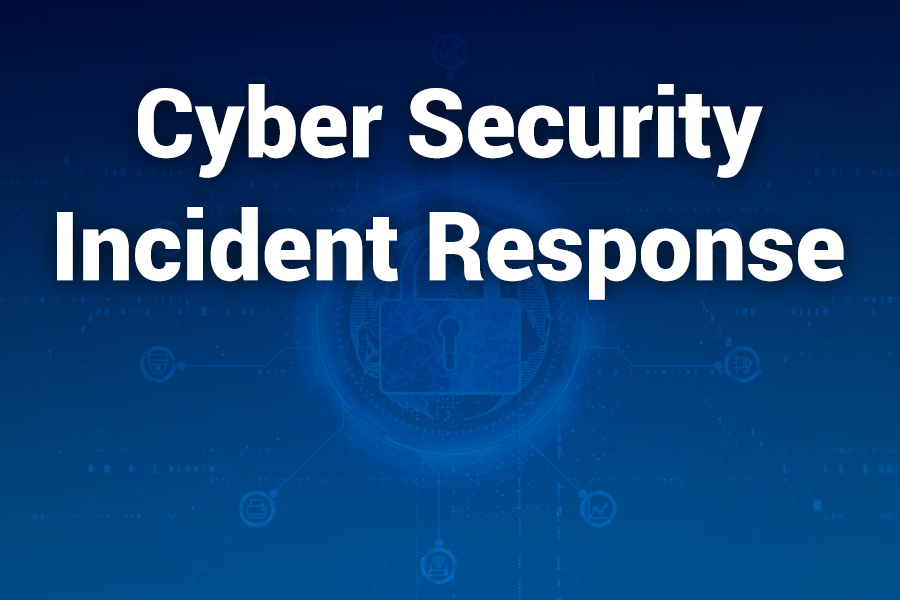A cyber security incident response plan is the backbone of every modern organization’s defense system. When a data breach, malware attack, or system compromise occurs, time is critical. The faster your team can detect, contain, and recover, the less damage you suffer.
Studies from IBM in 2024 show that companies with well-tested response plans save an average of $1.49 million per breach.
In this article, you’ll learn what a cyber security incident response plan is, its core phases, how to build one, and how it helps reduce financial, legal, and reputational damage.
What Is a Cyber Security Incident Response Plan
A cyber security incident response plan is a structured document outlining clear steps to identify, contain, and recover from cyberattacks. It guides your team during high-pressure moments and minimizes the chaos that follows a breach. The plan ensures every stakeholder knows their role and how to react quickly. It also establishes communication channels to avoid confusion during incidents. In short, it turns a company’s security policy into real-world action.
Why an Incident Response Plan Is Critical
Cyber threats evolve daily, and no system is invincible. The 2025 Verizon Data Breach Investigations Report revealed that over 83% of organizations experienced at least one security incident last year. Without a response plan, organizations face downtime, legal penalties, and data loss. A well-prepared plan builds resilience and trust. It ensures continuity even when systems fail. It also reduces panic and aligns teams toward quick recovery.
Core Phases of Cyber Security Incident Response
Every effective response framework follows six main phases. These steps form the foundation of NIST and CISA-recommended models for organizational defense.
- Preparation
Preparation defines the success of the entire plan. It includes forming a dedicated incident response team (IRT), assigning roles, and equipping them with tools. Teams must have updated contact lists, secure communication platforms, and access to system logs. Regular training and simulations help identify weaknesses before real attacks occur. - Identification
This phase focuses on detecting unusual behavior and confirming if it’s a true incident. Security tools like SIEM, IDS, and AI-powered analytics help spot anomalies such as unauthorized logins or data exfiltration. Early detection is crucial, as delayed responses can double the damage. IBM reports that organizations detecting breaches in under 30 days save 37% more than slower responders. - Containment
Once an incident is confirmed, the team must isolate affected systems. Containment prevents the threat from spreading across networks. Short-term actions may include disconnecting infected devices, blocking malicious IPs, or revoking compromised credentials. Long-term containment could involve applying patches or updating firewall rules. Effective containment buys time for deeper analysis without halting operations completely. - Eradication
Eradication focuses on removing the root cause of the incident. This may include deleting malware, disabling backdoors, or removing malicious user accounts. It’s vital to ensure no remnants of the attack remain. Teams should document all actions for future audits. A clean system prevents re-infection and restores network integrity. - Recovery
Recovery restores systems and services to normal operation. Before reconnecting affected systems, teams verify that vulnerabilities are patched. They monitor for signs of residual issues and perform post-restoration scans. Proper recovery ensures business continuity while maintaining trust among clients and stakeholders. - Post-Incident Activity
After containment and recovery, teams analyze lessons learned. They review how well the plan worked and update policies accordingly. Post-incident meetings help identify gaps, refine response time, and strengthen the overall framework. This phase transforms every incident into an opportunity for improvement.
Key Components of a Strong Incident Response Plan
A detailed response plan goes beyond technical procedures. It combines policy, communication, and governance. Essential components include:
- Defined Roles and Responsibilities: Every member should know who makes decisions, who communicates with the public, and who restores systems.
- Incident Classification: Establish severity levels to prioritize high-impact incidents first.
- Communication Protocols: Define how and when to inform executives, legal teams, and affected customers.
- Tools and Technologies: Maintain updated monitoring, forensic, and backup solutions.
- Testing and Training: Conduct tabletop exercises and live simulations quarterly.
Common Cyber Security Incidents Businesses Face
Cyber incidents can range from minor phishing to large-scale ransomware attacks. Some of the most frequent include:
- Phishing and Social Engineering: Attackers trick users into sharing credentials.
- Ransomware: Hackers encrypt data and demand payment.
- Insider Threats: Employees or contractors misuse access privileges.
- Distributed Denial of Service (DDoS): Flooding servers with traffic to disrupt access.
- Data Breaches: Unauthorized access exposing sensitive customer information.
Each incident type requires a tailored response strategy. Quick isolation and verification steps help contain the issue before it spirals.
How Automation Transforms Incident Response
Traditional response methods rely heavily on manual investigation. However, modern tools like SOAR (Security Orchestration, Automation, and Response) and AI-driven platforms now automate detection and containment. Cynet and other leading vendors report that automation can reduce response times by over 70%. Automation minimizes human error, speeds analysis, and allows 24/7 monitoring. It frees human teams to focus on strategic decisions rather than repetitive tasks.
Building an Effective Incident Response Team (IRT)
An incident response team must be cross-functional, combining technical and organizational expertise. The ideal team includes:
- Incident Manager: Oversees operations and coordinates decision-making.
- Forensic Analyst: Collects digital evidence and investigates root causes.
- Network Engineer: Restores systems and patches vulnerabilities.
- Communications Lead: Handles internal and external messaging.
- Legal Advisor: Ensures compliance with privacy laws and reporting requirements.
Each member must be trained and accessible 24/7 during emergencies. Clear authority lines prevent confusion when seconds matter.
Developing and Testing the Response Plan
A plan that sits idle on paper offers no protection. Testing validates assumptions and exposes blind spots. Conduct simulation exercises that mimic real-world attacks. These tests train staff under pressure and evaluate system resilience. Regular reviews ensure that plans remain relevant amid new threats.
Metrics to Measure Response Success
Key performance indicators (KPIs) help track the plan’s effectiveness. Common metrics include:
- Mean Time to Detect (MTTD)
- Mean Time to Respond (MTTR)
- Number of incidents resolved within SLA
- Frequency of repeated attacks
Tracking these numbers builds accountability and helps justify investments in cybersecurity.
Legal and Compliance Considerations
Failure to manage incidents properly can lead to legal consequences. The U.S. has stringent data protection laws such as HIPAA, GLBA, and state-specific privacy acts. Organizations must report data breaches within defined time frames. Fines for noncompliance can reach millions. Documenting every response step ensures compliance and transparency.
The Financial Impact of Poor Incident Response
A single breach costs an average of $4.45 million in 2024, according to IBM. Downtime, ransom payments, and reputational harm amplify losses. However, companies that adopted automated response systems saw cost reductions of up to 48%. Incident readiness isn’t just technical—it’s financial protection. A rapid, coordinated response preserves brand value and customer confidence.
Integrating Response with Broader Cybersecurity Strategy
Incident response doesn’t exist in isolation. It must integrate with broader cybersecurity practices like vulnerability management, threat hunting, and risk assessment. Continuous monitoring ensures real-time visibility. Sharing insights between security and IT teams strengthens overall resilience. A unified approach eliminates silos and enhances situational awareness.
How to Create a Cyber Security Incident Response Plan
Follow these key steps to develop your organization’s plan:
- Assess Current Risks: Identify assets, threats, and potential attack surfaces.
- Define Objectives: Set measurable goals such as response time or downtime reduction.
- Assign Roles: Build your response team with clear responsibilities.
- Develop Procedures: Document step-by-step processes for various incident types.
- Train Employees: Ensure all staff can recognize suspicious activity.
- Test Regularly: Conduct drills to measure readiness and refine weak points.
The Role of Communication During Incidents
Communication failures often worsen cyber crises. During an attack, misinformation spreads quickly. A predefined communication plan ensures consistent updates to employees, executives, and customers. Transparency reduces panic and maintains credibility. Collaboration tools and encrypted channels support secure coordination.
Continuous Improvement and Threat Intelligence
Threats evolve, and so must your response plan. Regularly review global threat intelligence reports and adjust defenses accordingly. Partnering with security agencies and industry peers helps stay ahead of emerging tactics. A feedback-driven cycle ensures your plan matures over time.
Real-World Example of Strong Incident Response
In 2023, a major U.S. healthcare company suffered a ransomware attack but restored systems within 24 hours. Their success stemmed from pre-defined playbooks, automated containment, and strong communication protocols. The event demonstrated how preparation transforms potential catastrophe into manageable disruption.
Future of Cyber Security Incident Response
The next frontier of response lies in predictive defense. AI-driven analytics will identify patterns before attacks occur. Cloud-based security orchestration will provide faster cross-environment coordination. As cybercrime evolves, proactive intelligence and machine learning will redefine speed and precision in defense.
Conclusion
Cyber security incident response isn’t optional—it’s essential. The right plan transforms chaos into control and fear into preparedness. With clear procedures, automation, and training, organizations can face any digital threat with confidence. Building, testing, and refining your plan today means protecting your reputation, data, and customers tomorrow.







